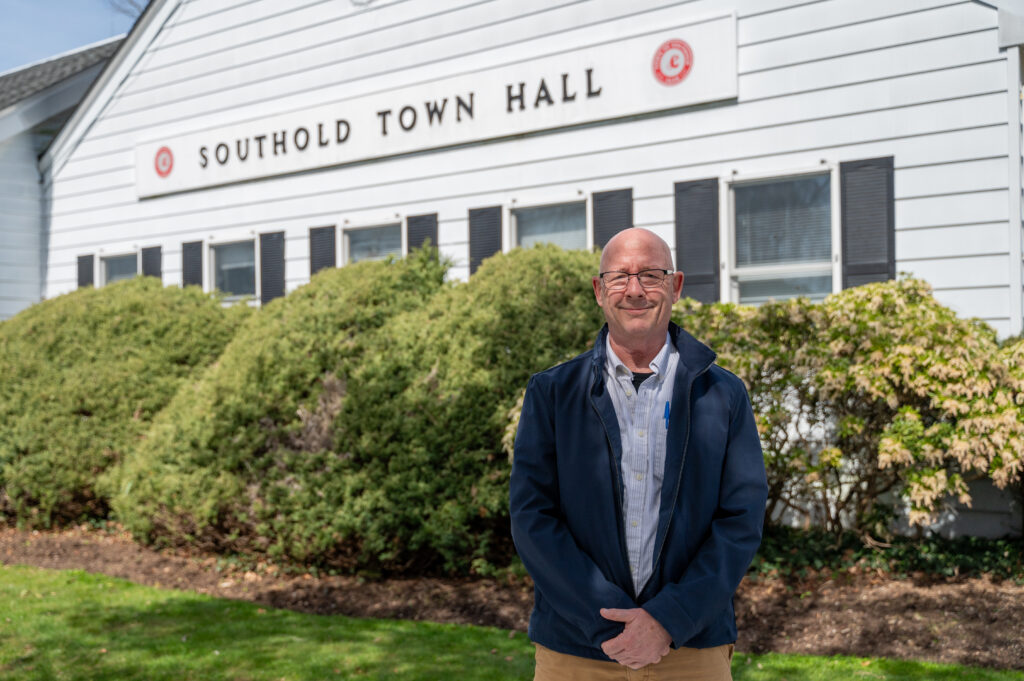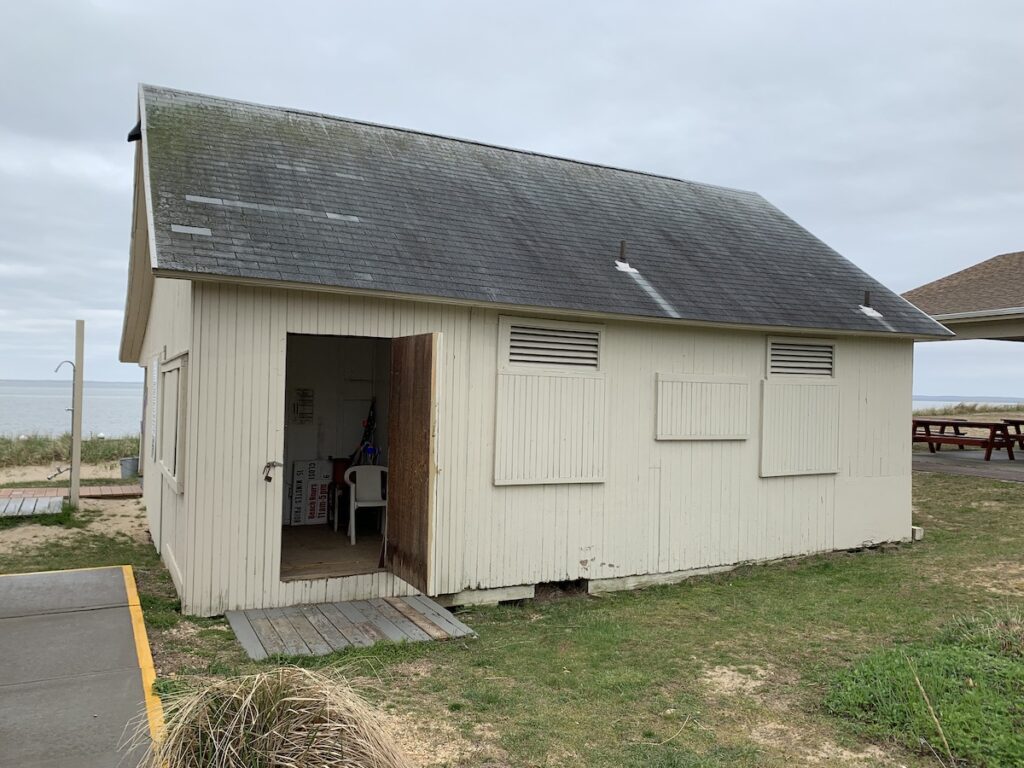Documentary filmmakers want to tell the story of Plum Island

For Thomas Halaczinsky and his wife, Petrina Engelke, the small islands around New York City and those east of Long Island were a fascination from the moment they first began to explore the world around them.
In 2018, Mr. Halaczinsky, a photographer and documentary filmmaker, published a book, “Archipelago New York,” a picture and literary journal documenting more than 70 islands from New York Harbor to Fishers and Block islands 100 miles east of New York City.
Mr. Halaczinsky and Ms. Engelke, a journalist, were drawn by their beauty, but also their history, dating back to when Indigenous people lived and hunted on these islands.
“I was captivated by these islands, and I felt their stories were mostly untold,” Mr. Halaczinsky said.
Today, the couple’s new project from their home-base in Greenport is a documentary about Plum Island — its past as a hunting ground for the Montaukett people, its longtime use as a federal laboratory studying animal diseases, and its future — after that lab is shuttered and a new one is built in Kansas.
What will become of Plum Island then?
The island rests amid the archipelago of islands in the pristine waters of Gardiners Bay. Everyone who has set foot on it in recent years, as its fate is being determined, has come away speechless at its extraordinary natural beauty and the rich saltwater ecosystem around it.
Plum Island is three miles long and one mile wide at its widest point. Since 1954 it has been the home of the Animal Disease Center, started by the federal Department of Agriculture in 1954. But its history did not begin then: For centuries before any Europeans arrived on the East End, the Montaukett people, as well as the coastal New England tribes such as the Pequot, hunted there.
Their graves are likely there as well. Their rich cultural history — part of the history of eastern Long Island that has not been properly told — is on the island, itself a mystery waiting to be discovered. In 1897, the federal government built Fort Terry on the island; the historic Plum Island Lighthouse was built in 1869.
Because access to the island is now controlled by the Department of Homeland Security, very little archeology has been done on it. Mr. Halaczinsky and Ms. Engelke are hoping their documentary will shed new light on the island’s past and explore its present.
“The history of Plum Island is remarkable,” Mr. Halaczinsky said. He sat with Ms. Engelke at the dining room table of their Greenport home, which is also a piece of local history dating to the 19th century. Mr. Halaczinsky’s studio, his photographs on its walls, is on the second floor.
“Why are we interested in these islands?” he said. “I think it was the realization of a recent immigrant coming to New York City and realizing the city is an island and I was fascinated by that. I am a sailor and wanted to explore. In 2010, I bought a sailboat and started to visit these islands. They were a mystery to me.”
Both were born in Germany. Ms. Engelke came to New York in 2010; Mr. Halaczinsky came in 1991 as a film and documentary producer. In that sense, they looked at the saltwater world around New York City and Long Island through fresh eyes, seeing beauty as well as mystery.
Both agree they were inspired by the stories of Dutch explorer Adriaen Block, who created some of the earliest maps of the region in 1614. He is believed to be the first explorer to show that Long Island was just that — an island.
He is also believed to have named both Fishers Island and Block Island and is known for his remarkable ingenuity: In 1613, his ship, the Tyger, was destroyed by fire while anchored off the southern tip of Manhattan, but with the help of the local Lenape people, Block and his crew built an entirely new boat, the Onrust — Dutch for “restless.”
They used that boat to explore what they regarded — falsely — as a “new” world, sailing up the East River and into Long Island Sound; they explored the Connecticut River and the islands off the East End. Somewhere on Cape Cod, Block and his crew boarded another ship for the return to Holland.
“Basically, I followed Block’s map,” Mr. Halaczinsky said. “He discovered the East River was not a river at all but a part of Long Island Sound. The ship he built was small, maybe 40 feet. He tested it going through Hell Gate in the East River.”
“What struck Thomas was the map,” Ms. Engelke said. “The map made him think, how many islands are there? He wanted to follow Block’s route in his boat. And we sailed here to Greenport in 2013.”
At that time, Plum Island’s fate was uncertain. In 2009, Congress put a “for sale” sign on the island. In 2020, thanks to the work of groups such as Save the Sound and New York and Connecticut’s public officials, the sign was removed.
As of today, the effort to preserve Plum Island — the lab occupies only a small portion in the northwest corner — is focused on designating it as a national monument. President Joe Biden could make such as designation, and Congress also can.
To that end, First District Rep. Nick LaLota (R-Amityville) has offered just such a bill in the House of Representatives. He recently met advocates for the island’s designation as a national monument at Orient Point and has been a strong voice for the island’s preservation.
“I introduced the Plum Island National Monument Act as my first bill to ensure this ecosystem and the cultural heritage around Plum Island is preserved for future generations,” Mr. LaLota said in an email. “I also sent a letter to President Biden urging him to endorse my bill and/or use his powers under the Antiquities Act of 1906 to designate the island as a national monument. It has been wonderful working with many groups, including the Preserve Plum Island Coalition, to grow support for this effort. As a supporter of conservation and protecting Suffolk County, I am committed to seeing this legislation become law to support the best interests of our community.”
“He really wants this to happen,” Louise Harrison, natural area manager for Save the Sound, said of Mr. LaLota’s efforts. “We are very happy about that. He sees its ecological importance, but also its cultural heritage for the Montaukett people as well.
“There are no voices to develop it,” she added. “Only how to preserve it.”
Sandi Brewster-Walker, a member of the Montaukett Nation, said history shows how the first occupants of this land lived and cared for it. “First, all national monuments and parks exist on traditional ancestral Indigenous or Native American land,” she said.
“As the original stewards of Plum Island, the Montaukett people are dedicated in playing a key role in the future of the preservation and interpretation of this cherished land, its cultural and sacred sites,” she continued. “The underdeveloped part of Plum Island contains thousands of years’ worth of Montaukett history, and we want to research and preserve it.
“When traveling to New England using the Cross Island Ferry, as I pass the island, I experience a powerful spirit that existed there from ancestral times,” she said. “Many of the Montaukett people look forward to the day we will be allowed to put our feet on the shores of part of our ancestral homeland, and perhaps visit the unmarked burial sites of our ancestors.”
Ms. Engelke and Mr. Halaczinsky do not have a budget firmly drawn up yet for the cost of their documentary. They point out that the budgets of similar documentaries start at $300,000 on the lowest end. They encourage anyone who can help to visit their website: archipelagoproductions.tv/plumisland.
New York’s islands were on Mr. Halaczinsky’s mind for a long time. He recently directed a three-part series about them for European television. “Hearing that the future of Plum Island was in limbo sparked the idea for a full-length, independent documentary about the island, its history and the efforts to preserve it,” he said.
Ms. Engelke agreed. “We learned that the island belongs to the public,” she said, “and we want everyone to have a say in its future. What are the options? Whose island is it? These are the questions we want to raise.”








